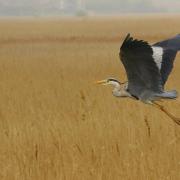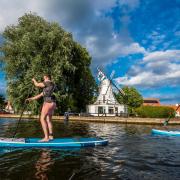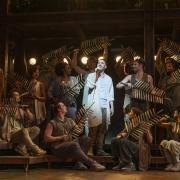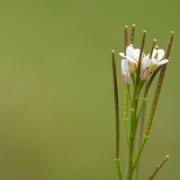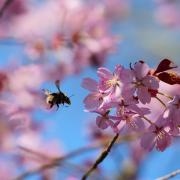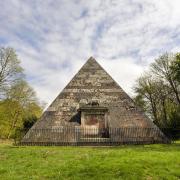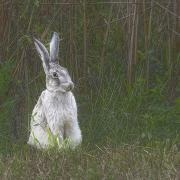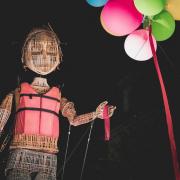Life through the lens- Hallam Ashley's photographs of Norfolk's crafts and industries are the subject of a new book from English Heritage. Keiron Pim found out more from Kathleen Davidson, the photographer's daughter.
Life through the lens
Hallam Ashley’s photographs of Norfolk’s crafts and industries are the subject of a new book from English Heritage. Keiron Pim found out more from Kathleen Davidson, the photographer’s daughter.
Norfolk’s architecture and landscape are familiar subjects for photographers, but Hallam Ashley was determined to find new perspectives on them. And if this meant climbing church towers and windmills or leaning over battlements and riverbanks while his daughters clung on to his legs to keep him safe, then so be it.
Kathleen Davidson has so many fond memories of her father at work, as is clear from her touching foreword to a beautiful new collection of his photography published by English Heritage. Taken mainly between the 1940s and 1960s, the pictures focus on rural crafts and industries, from the bustle of Norwich’s corn exchange to the isolated endeavours of reed-cutters out on the Broads, with many of them capturing a lost era in Norfolk’s agricultural history. For Kathleen, who is aged 79, the photographs are a reminder both of her childhood and the county she loves. Along with her sister Patricia she now lives in Northern Ireland, but she was born in Norwich and has spent much of her life in Norfolk.
In 1929 her parents bought a home in Ashtree Road, New Costessey, which would become Ashley’s base for his explorations around the country, but his family originated from Nottinghamshire. “It was in his blood to be a photographer,” says Kathleen. “His grandfather John was the first professional photographer in Retford, Nottinghamshire, and founded the family photographic and picture framing business in 1852. He sold the business to his youngest son, Arthur Ernest, in 1904, and then Dad took over the business in 1918 from his father.”
But before long Ashley decided to become a roving freelance photographer rather than be tied to a studio. He began by taking photographs for tourists at the seaside in Ilfracombe, Devon; worked as a scholastic photographer for a spell, and then began his connection with English Heritage.
In 1941, two years into the second world war, fears grew that Britain would face intensive bombing and so the National Buildings Record was established, with the aim of assembling a comprehensive record of the country’s important architecture in case it should be destroyed in the war.This started her father on his path, Kathleen believes. Ashley, who lived from 1900 to 1987, was never happier than when he was out photographing buildings. He took his work seriously, researching the buildings’ history and ensuring that he understood what he was depicting.
Some were country houses, others were industrial buildings. Norfolk’s mills were a particular favourite, both for father and daughter. Kathleen has happy memories of picnicking by the water at Horstead Mill, which would be destroyed by fire in 1963.
She also recalls how impressed her father was by visiting Savage’s works at King’s Lynn, which built fairground carousels, and she remembers Norwich’s Corn Exchange, which was demolished not long after their visit in 1960. “I was talking to my sister about that only the other day,” she says. “I remember farmers standing there with grain in their hands and rubbing it, trying to sell it as really good stuff.”Over the years Ashley’s adventures took him and his daughters into all sorts of scrapes.
“It was so fascinating,” she recalls. “We got into some weird places. We never said we were nervous; that wasn’t the thing to do at all. “I remember once they were doing an archaeological excavation at Barn Road in Norwich on the old wall. Father was asked to take some photographs because he knew all the people at the Castle Museum. He wanted to get height to look down on the excavations, so he stood on the roof of his Austin Seven, and my sister and I leant against the car with all our might to keep it steady. That was the kind of life we led!“At King’s Lynn he was photographing the Custom House. He wanted a certain view and the only way he could get what he wanted was to lie face down on the bank with us clutching his ankles! That was quite a popular photograph.
“But my sister had the worst, on the top of the Castle Museum with the battlements. Father wanted a view where he would need to lean through the crenellations. He was leaning over with the camera and my sister was holding his feet. She says she has nightmares to this day where she is worried in case his shoes come off. But that was the man!”
Traditional Crafts and Industries in East Anglia – The Photographic Legacy of Hallam Ashley by Andrew Sargent is published on February 28 by English Heritage as a �16.99 paperback original. To order a copy at the special price of �15 including postage and packaging, call 08454 589910 or email eh@centralbooks.com and quote EDPTC.



